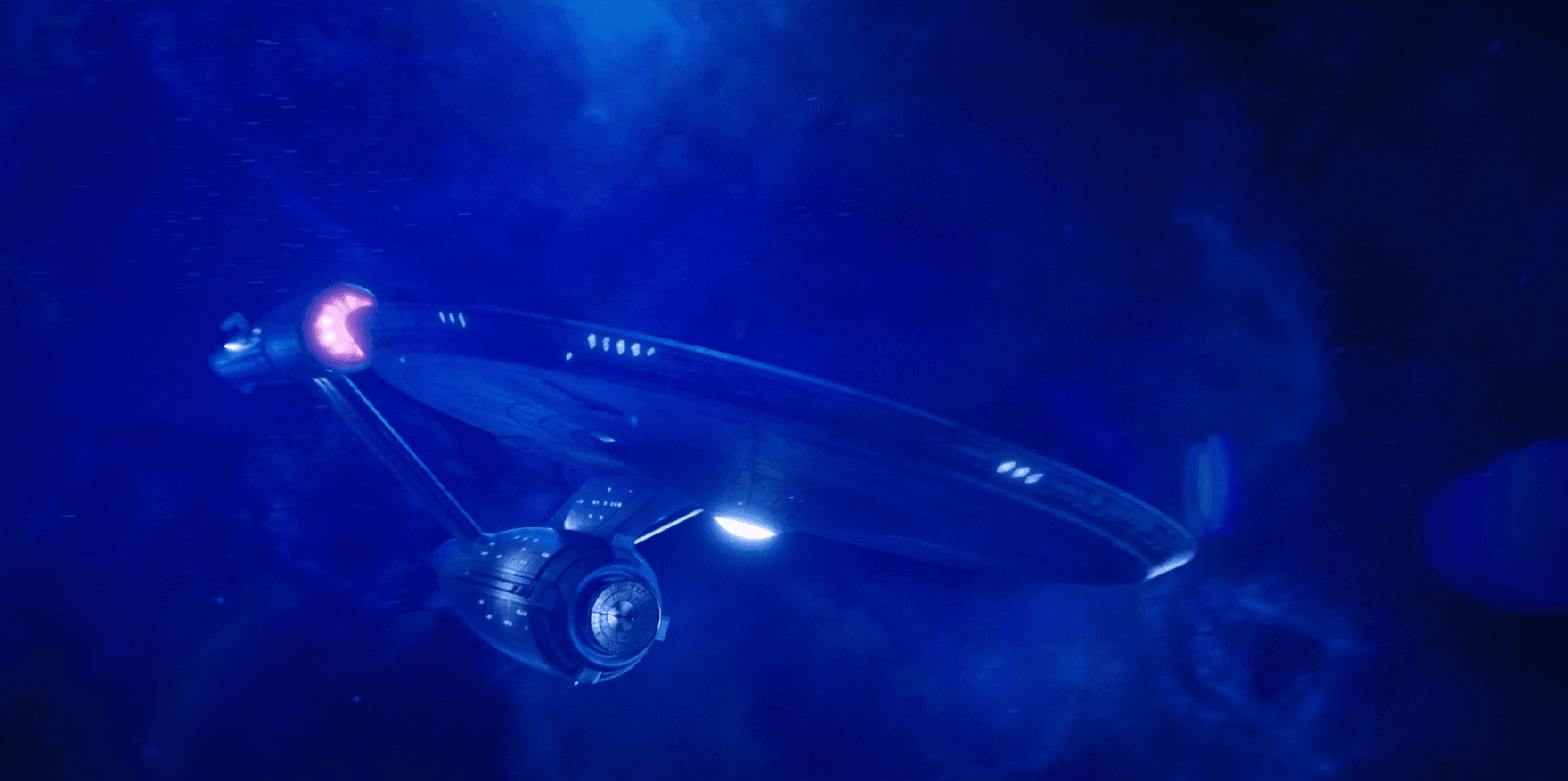
“That looks cool, but it’s not quite right.”
That may be the most succinct possible way to sum up the designs of ‘Star Trek: Discovery’, at least with regard to the show’s at times vexing approach to the franchise’s visual continuity. But nowhere is that description more applicable than the closing minutes of the show’s first season, in which the Discovery, en route to Vulcan to pick up her new commanding officer, finds herself face to face (as it were) with the Enterprise.
Thankfully, the Enterprise as seen on ‘Discovery’ hews much closer to the iconic original design by Matt Jeffries than what we saw in the J.J. Abrams movies. But nonetheless, it did see its share of changes in this update, which eagle-eyed fans wasted no time in cataloging (TrekMovie has a great breakdown). But why not just use the original design? Or at least stick a bit more closely to it? After all, while this is hardly the first time the original Enterprise has appeared in a more contemporary ‘Trek’, it is the first time the powers that be have felt the need to make significant modifications to the design.
While ‘Discovery’ has often been accused of “changing things because they can,” the look of the Enterprise is at least one occasion in which real-world concerns trumped the producers’ preferences. In a Facebook post regarding his contributions to the 2019 ‘Star Trek: Ships of the Line’ wall calendar, concept illustrator John Eaves revealed that there was, of all things, a legal reason for the changes:
“Back in April 2017 the task of the Enterprise making an appearance came to be and work was to start right away. The task started with the guideline that the Enterprise for ‘Discovery’ had to be twenty-five percent different, otherwise production would have most likely been able to use the original design from the sixties. But that couldn’t happen, so we took Jeffries’ original concepts and with great care tried to be as faithful as possible. We had the advantage of a ten year gap in ‘Trek’ history to retro the ship a bit with elements that could be removed and replaced somewhere in the time frame of ‘Discovery’ and the original series.”
To say that Eaves is familiar to longtime fans would be an understatement. In addition to ‘Discovery’, his designs have been featured in the last four seasons of ‘Deep Space Nine’, the entire run of ‘Enterprise’, and every feature film since 1994. This background allowed the ‘Star Trek’ veteran to provide a particular insight into where these legal demands originated from, particularly given that past outings have simply been able to use the classic design as-is. As Eaves explained in a follow-up post:
“After ‘Enterprise’, properties of ‘Star Trek’ ownership changed hands and were divided, so what was able to cross TV shows up to that point changed and a lot of the crossover was no longer allowed. That is why when J.J.’s movie came along everything had to be different. The alternate universe concept was what really made that movie happen in a way as to not cross the new boundaries and give ‘Trek’ a new footing to continue.”
That, actually, is news. The shuffling of the ‘Star Trek’ rights that Eaves refers to had previously been understood (publicly, at least) as a result of the CBS/Paramount split that followed the 2005 cancellation of ‘Enterprise’. As it was reported at the time, this resulted in the television rights going to CBS while the feature film rights stayed with Paramount (thus the current disconnect between the two arms of the franchise). But if Eaves’ information is correct – and we have no reason to believe it isn’t – the division of the rights may be more complicated than that. After all, the rights relating to the original Enterprise design would presumably rest firmly on the television side. After all, not only was that design developed for the original (television) series, it was never featured on the silver screen. But evidently, there is more to it than that, as ‘Discovery’ was required to change a full twenty-five percent of the design.
‘Star Trek: Discovery’ begins production of its second season in April. The new season will feature returning stars Sonequa Martin-Green, Doug Jones, Mary Wiseman, and Anthony Rapp alongside newcomers Anson Mount and Tig Notaro. Though no premiere date for the second season has been announced yet, it is expected to begin airing on CBS All Access in late 2018 or early 2019.
